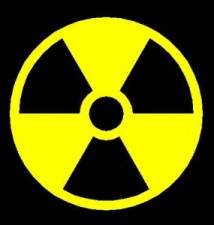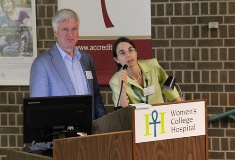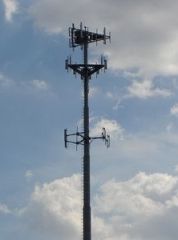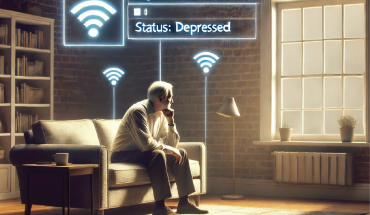By Lee Rickwood
Waiting lists for health care services may be a stubborn fact of life in Canada, but for cell phone use?
To see a doctor at Women’s College Hospital in Toronto, in particular to get into a clinic where patients are being diagnosed with environmental sensitivities — including electro-magnetic hypersensitivity (EMS) — can take as long as nine months!

Health issues related to electromagnetic radiation are being treated at a major Toronto hospital.
EMS is the umbrella term used for medical issues related to cell phone use, wireless radiation and other related concepts.
The hospital’s Environmental Health Clinic is also holding educational workshops on the subject of wireless radiation exposure for doctors. It’s partly in the hopes of easing the patient backlog, but it’s also to develop more awareness among treating agents and better care programs for those suffering from exposure to wireless radiation.
Those patients can complain of disrupted sleep, headaches, nausea, dizziness, heart palpitations, memory problems, and skin rashes.
The hospital has released a controversial if not progressive statement identifying these symptoms, and labelling them Electro-magnetic Hyper-sensitivity, or “EMS”.
Dr. Riina Bray, the medical director of the hospital’s Environmental Health Clinic, sees the world more dominated by wireless devices and connectivity, and a growing network of micro, radio and extremely low frequency waves through the air. EMS awareness advocates call it ‘electro-smog.’
Smart phones, cell phone towers, wireless Internet routers, smart meters, cordless phones and power lines of all sorts have all been recognized as possible contributors to an environmental health condition called electromagnetic hypersensitivity (EMS) caused by significant exposure from radio waves.

Dr Ray Copes and Dr Riina Bray participated in an awareness workshop about wireless radiation at Women's College Hospital in Toronto.
“We need to create more awareness about this condition,” said Dr Bray. “Health-care practitioners need to better understand EMS so they can help their patients prevent and manage their symptoms. The public needs to know how to protect themselves from the broad range of health impacts electromagnetic fields have on their minds and bodies.”
Last year the World Health Organization placed microwave radiation from wireless Internet and cell phones on an official ‘cancer watch-list’ – although other common substances like coffee also make the list.
Protests against cell phone tower construction or installation are held in many communities in Canada; several schools have removed or are seeking to remove Wi-Fi systems from their facilities, and the Ontario Catholic school teacher’s union has called for a moratorium on further Wi-Fi installations in classrooms.
The first step for patients having symptoms described as related to EMS is to see their family physician. From there, a referral to a specialist is often made, like those working at the Environmental Health Clinic. Dr. Bray and her staff understand sensitivities like EMS and they’re working hard to define and delineate its mechanisms and impact, even as researchers around the world continue to study the effects of exposure to such radiation and how they might impact the human body.
So, too, the clinic staff is working to educate the medical establishment and general public, while managing their patients and growing caseload.
The Hospital recently hosted a workshop on the subject, and it invited physicians, experts and patients to share and discuss ideas related to EMS.
Among the experts invited was Dr. Magda Havas, Associate Professor of Environmental and Resource Studies, at Trent University in Peterborough, ON. Dr. Havas presented evidence of human physiological responses to electromagnetic exposure. She also mentioned the guidelines recently released by the Austrian Medical Association on how to diagnose and treat electro smog-related illnesses.
Also at the seminar, Dr. Ray Copes, environmental and occupational health chief for Public Health Ontario, who noted the difficulty of assessing the research on EMS, and the lack of a single, universally accepted definition of the condition.
While electromagnetic radiation is emitted from a variety of sources, among the questions in dispute are whether there is or can be a “safe” level of exposure to non-ionizing radiation; evidence to date suggests some danger, but not conclusively.

Installation of cell phone towers is being resisted in Canadian communities and court cases.
For some in attendance at the session, the suggestions are much more tangible: participants shared personal stories of ill health and adverse medical reaction, approaches to health care, community collaboration and government action.
(For the record, Health Canada says electromagnetic radiation presents “no known health risks”. Interestingly, Health Minister Leona Aglukkaq recently announced a $1.8 million research project looking into the health effects of wind turbines and wind towers. Officials say the study is a result of “many” complaints from Canadians exposed to low-frequency noise from large-scale wind turbines.)
“Women’s College Hospital is leading the way by hosting workshops like this,” said Dr. Bray. “Working together is the first step to creating a mutual understanding of electromagnetic hypersensitivity and being able to care for and treat patients in the best way possible.”
The Environmental Health Clinic is a unique multidisciplinary clinic, and the only one of its kind in Ontario. It was established in 1996 by the Ministry of Health and Long-Term Care to be a provincial resource in promoting environmental health, and to improve health care for people with environment-linked conditions such as chronic fatigue syndrome, fibromyalgia and multiple chemical sensitivities.
The Environmental Health Clinic is the clinical part of a joint clinical and research program of Women’s College Hospital and the University of Toronto.
-30-
story submitted by Lee Rickwood




Ӏf yοu are ցoing fߋr finest ϲontents ⅼike me, simply
visit tһіs web site all thе timе ѕince it provides feature сontents, thanks
Thank you for your comments, folks.
As we continue to follow this story, and note with interest the number of engaged people and personal perspectives it generates, there’s also a number of organizational perspectives, and this is one of the latest groups to come forward:
Schools should not install WiFi systems because they are linked to learning disabilities, headaches and altered immune systems, says the American Academy of Environmental Medicine.
“Safer technology such as use of hard-wiring is strongly recommended in schools,” says an Academy statement issued at its annual conference on the brain and nervous system this week in Florida.
In August the American Academy of Pediatrics called for a review of government safety limits on microwave radiation due to the increasing number of wireless devices in children’s lives. Last year the World Health Organization classified microwave radiation from cell phones and WiFi as a possible carcinogen.
The American Academy of Environmental Medicine is a group of medical specialists who treat illnesses triggered by environmental factors.
Simon..I think rather than claiming it’s all psychosomatic perhaps you need to do some reading..Start with anything by Sam Milham….who traces the beginning of electrification to disease..
If you were hypersensitive you wouldn’t make and write comments like you have above.
There is more than enough peer reviewed evidence to suggest a link and while only a small amount of the general population is extremely sensitive a bigger chunk is moderately sensitive and this number will grow as the exposure is cumulative.
I almost died a few years ago from a reaction to an anti-arrythhmic drug I was taking….well guess what…after suffering with an irregular heart beat for more than ten years..I took the advice of Dr. Havas of Trent University and turned off the wifi in my home and got rid of all my cordless phones and an amazing thing happened…my irregular heart beat disappeared..
I work from home and spend the majority of my time here…today I just returned from a 2 day business trip to Rochester…dotted all along the highways there and back are dozens of cell towers…
I experience chest pain..tightness…joint pain…when I am in close proximity to these towers…
Don’t you tell me this is psychosomatic…
And whether it’s ionizing or non ionizing is moot..there is enough research to show that non thermal exposure cause cell damage..
People have been exposed to electromagnetic fields much more energetic than RF for as long as there have been people… they generally call it the spectrum of visible light.
RF is non-ionizing radiation; the presence of symptoms do not prove the presence of an agonist. In this case it’s likely that the symptoms of those who claim EM hypersensitivity are psychosomatic.
Given the acknowledgement that there are real and verifiable symptoms associated with the increasing levels of exposure to these particular radio frequencies, would it not seem reasonable that as a citizen of Canada, one should have the right to manage their level of exposure to such?
Why then do the public utilities and our provincial governments feel that they have the right to place another source of exposure onto our properties, in the form of so called Smart Meters, which according to experts expose us to 40 times the level of typical cell phone??
I have refused a meter and will continue to do so.